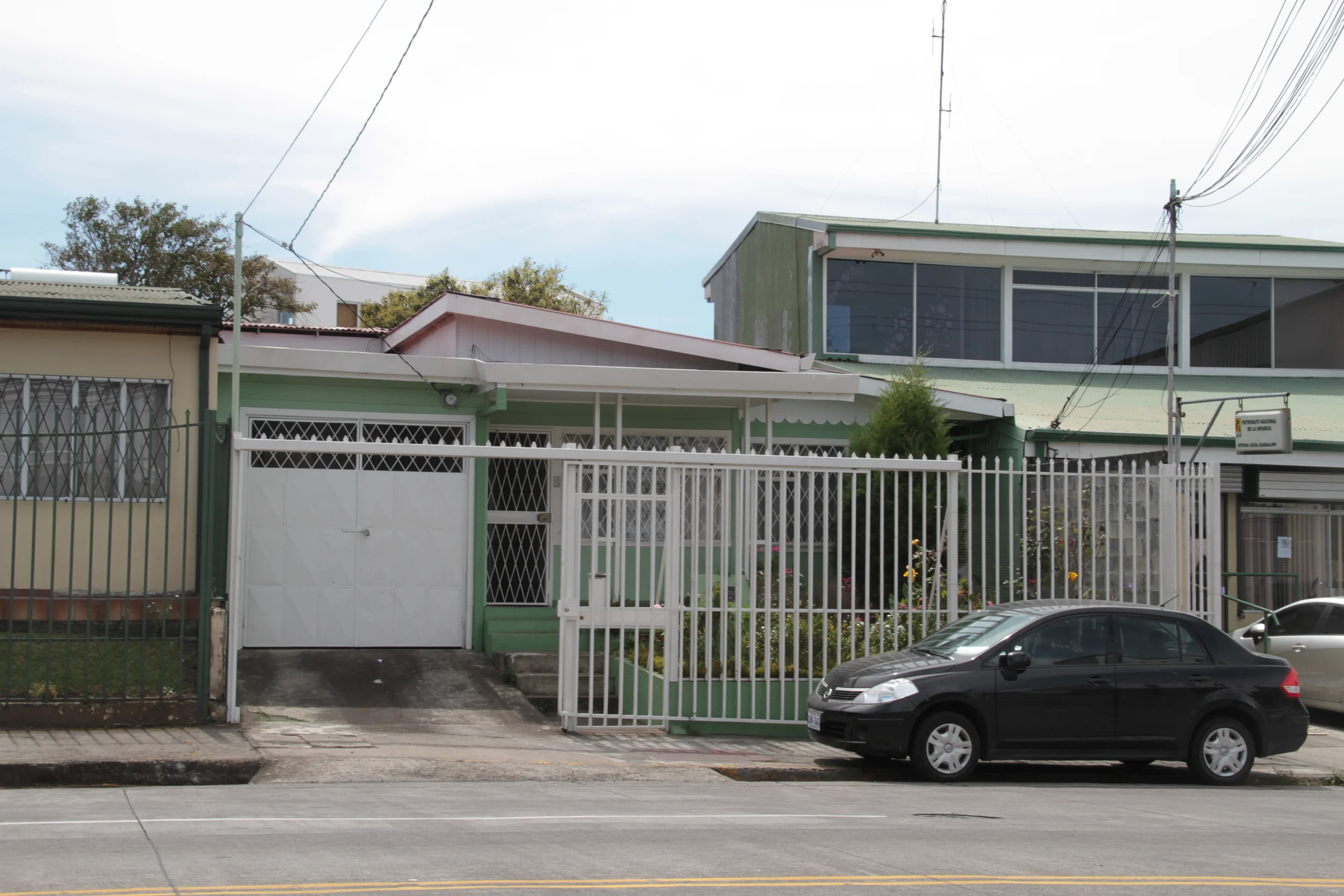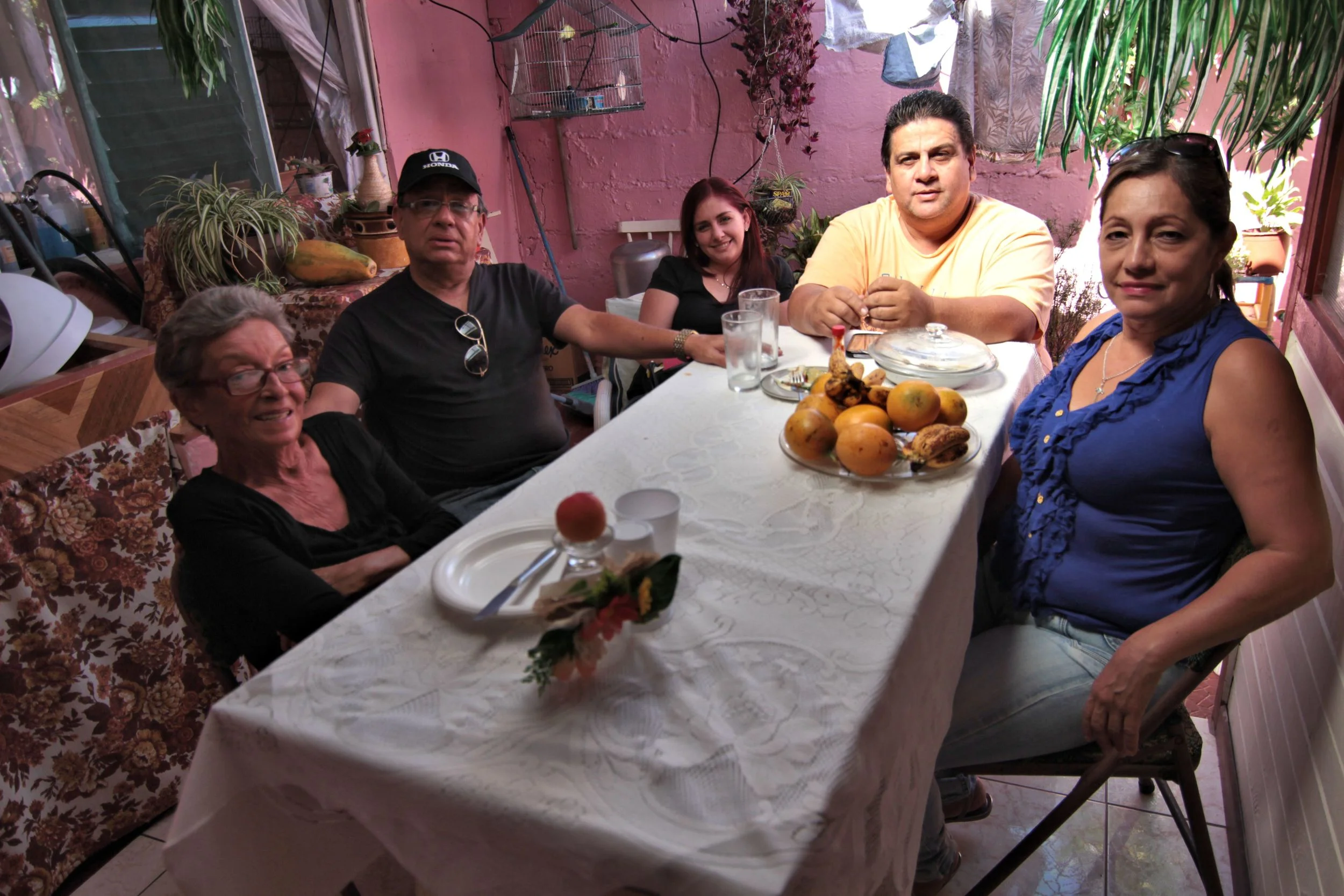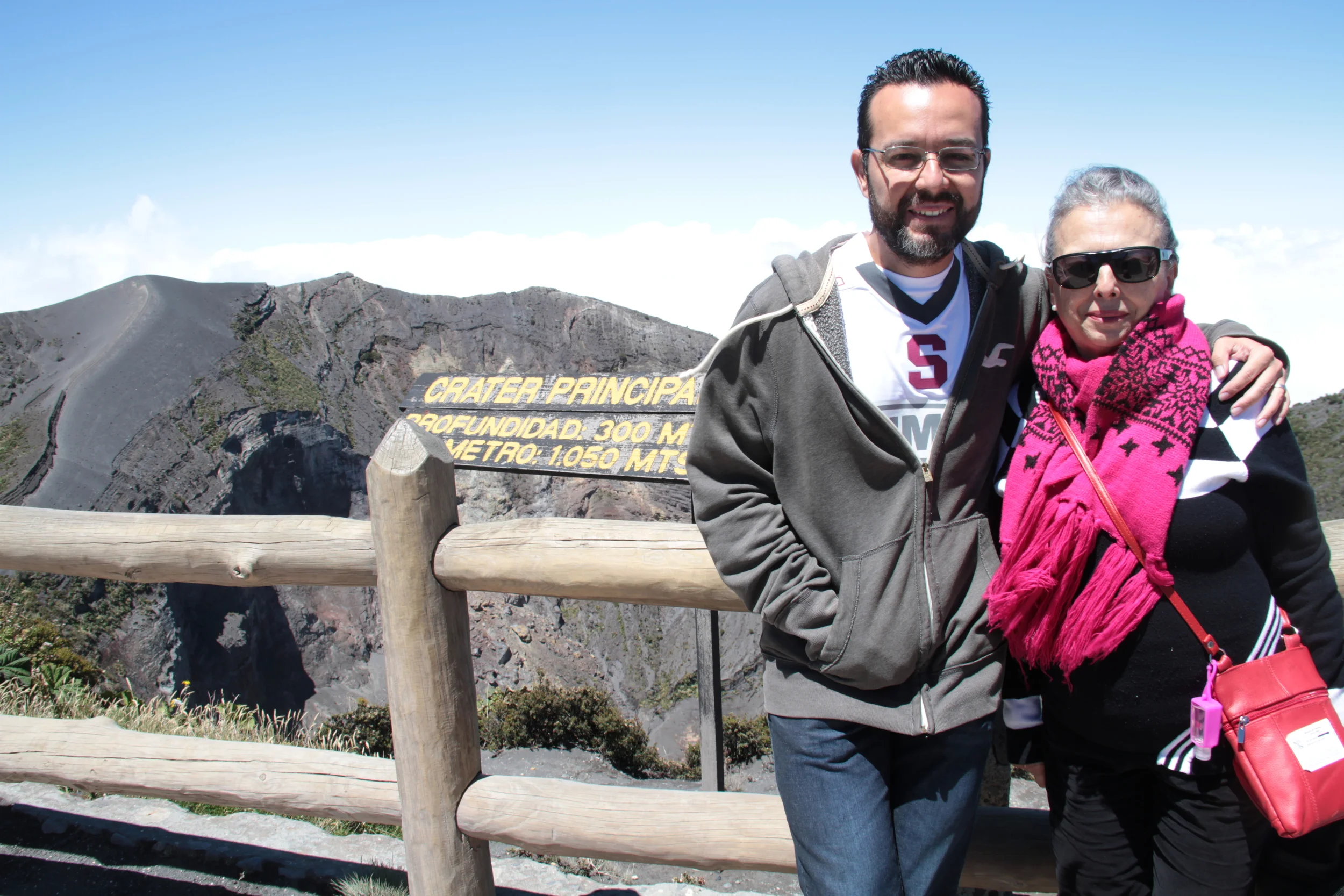
The monuments on the roof of the National Theater in San Jose, Costa Rica. The statues are not the originals. Those are on display in the building to keep them safe from weather, birds and earthquakes.

The theatre at night. I didn't take this picture. The author is unknown.

Within the theater. This is a post used as decoration along the main walk-way..

A lamp used to light the stairways. So ornate!

A theater-goer, a bit early for the next show.

The roof and upper balconies (peanut gallery).

Having dinner with the Hernandez-Murillo family. They were very generous to allow me to stay for the first week.

My cousin Miryam and husband Rodrigo on their wedding day. Although she looks like a teen, she was already in her 20's.

This is Cayetana Gonzalez-Murillo. She's my mom's cousin (on her dad's side). Lived from 1915 through 2004. Her son Javier (pictured) is a well known radio announcer today.

Cayetana Gonzalez-Murillo and her mom Florinda Murillo-Soto. 1874-1949. A very rare photo.

We found the house where we lived in the year 1960 (when I was born). The building is very different today. They added a garage (used to be a yard) and the front door was moved.

Another view of the house in Guadalupe near San Jose.

Many of the family attended this school in Cinco Esquinas (near San Jose). The fence was added to keep the kids from accidentally running out into the very busy street.

Having a "cafecito" with my cousins.

This school is named Escuela Dr Ferazz. My sister Maria attended this school in her elementary years.

Marielos and her son Randall took me to the city of Cartago. This was Costa Rica's original capital city. Nearby, the volcano named Irazu lies dormant for the moment. This shows the path from the parking lot to the caldera's rim.

At the rim with the cousins

Looking down into the caldera. It is currently dry. Normally a lagoon exists here.

In the city of Cartago, there exists church ruins. The photo is the 'road' that ran in front of the church. Notice the gutter running down the center. The road is sloped down to the center so coach and horse riders would keep their feet dry.

A view of the stone road and front of the church.

This is one one the first churches built in Costa Rica. This is the story:
Santiago Apóstol Parish Ruins
According to a popular legend, there were two brothers who lived in colonial Cartago city. One of them was a single, nice and loved person and the other a priest. A rivalry arose between them as both fell in love with the same woman, who chose and married the lazy brother. The priest was infuriated, and did everything he could to destroy his brother. Then, in 1577 during the New Year's mass, he saw his brother in the church and killed him with a knife. In penance for his mortal sin he built a church for the city, but one year afterwards an earthquake destroyed it. Each time it was rebuilt, another new earthquake destroyed it, until 1910 when it was canceled and thought to be a cursed site. It is also said that o
n foggy nights, it is possible to see the priest, headless, inside the ruins, wandering for eternity as his penance for desecrating a holy site.

My younger cousins: Pame, Fiorella, Matias and Julian. We stopped by the lagoon near the volcano named "Arenal". The lagoon is HUGE! Lake Arenal is an artificial lake in Costa Rica, located in the northern highlands of the country. It was enlarged to its present size as a part of a 1979 hydroelectric project by the Costa Rican government to provide electricity to the country.
Area: 32.82 mi² (85 km²)

In the northern area of Costa Rica there exists wind farms, used for generating electricity. You can see just how windy the area is by noticing how this tree grew.






















